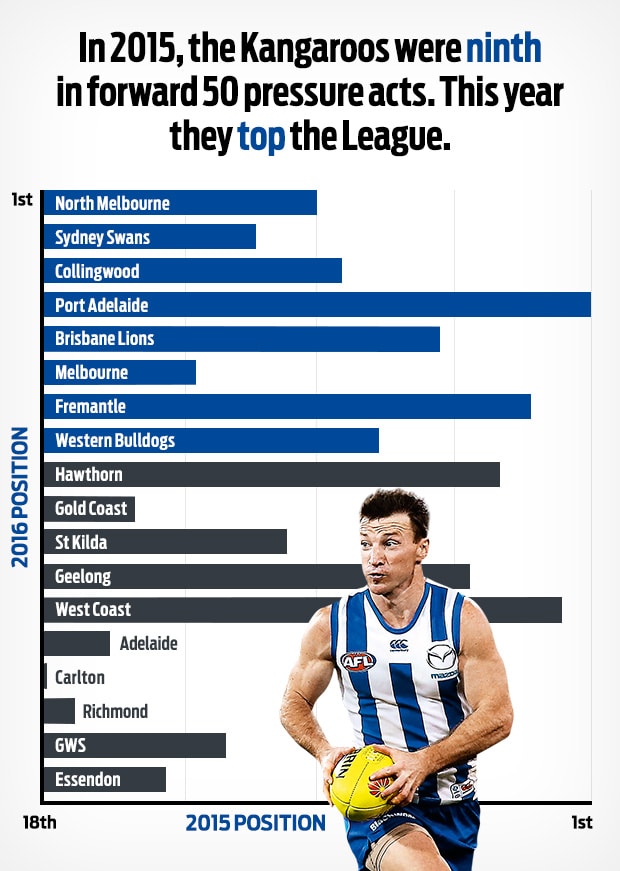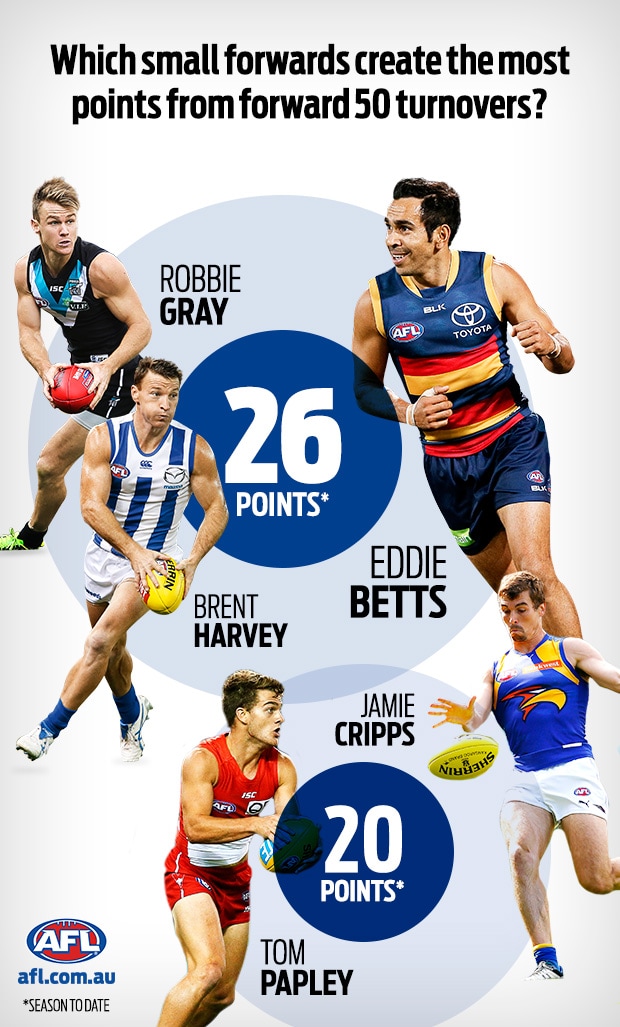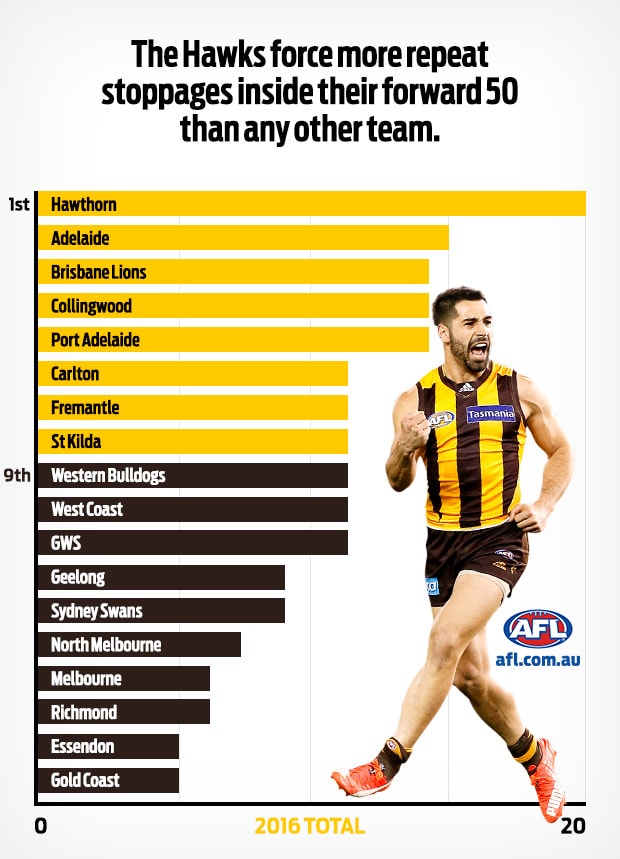The views in this article are those of the author and not necessarily those of the AFL or its clubs.
The undefeated Kangaroos are the AFL's highest-scoring side and have outgunned their rivals so far despite some defensive frailties.
Nothing about that North Melbourne surprises.
But dig a little deeper and the stats reveal where the Roos have changed.
Their pressure is through the roof.
Brad Scott's men have transformed themselves into the AFL's pressure kings – chasing, tackling and harassing opponents into errors, then making them pay on turnovers.

Last year, the Roos were ranked ninth for pressure factor (1.60) inside attacking 50, according to Champion Data's tracking.
They lagged behind preliminary final rivals West Coast (1.66), minor premier Fremantle (1.66) and eventual three-time champions Hawthorn (1.65).
But with game-plans hinging more than ever on locking the ball in attack and short-circuiting opponents' run from half-back, no club has been scrapping harder than the Roos this season.
North's pressure factor has skyrocketed to 1.80 to be placed No.1 in the AFL after five rounds.
Crucial to this improvement have been the usual suspects Brent Harvey, Lindsay Thomas and a revitalised Jarrad Waite turning back the clock and locking down inside 50.

Harvey has forced 18 turnovers in the forward arc this year, directly resulting in 26 points (equal third most in the AFL), and the Roos have scored the sixth most points in 2016 from turnovers.
Waite and Thomas have been elite at applying forward-50 pressure – gauged on factors such as creating physical pressure or corralling opponents – and veteran big man Drew Petrie never gives up on a chase.
Brad Scott's non-negotiables are clear, whether you're an old stager or just a youngster on the fringes.
Small forward Kayne Turner and Mason Wood have only played one game each this year, but Scott's message is getting through – both are ranked inside the League's top 15 for pressure inside 50.
Not even Hawthorn's tenacious five-goal hero Paul Puopolo (equal 35th) is matching up to those Roos' efforts in their forward arc.
Where the Hawks do set the gold standard is tackle efficiency (AFL No.1). When Hawthorn players lay a tackle, it sticks.

On the other hand, the Roos apply the clamps through frenetic tackling attempts and closing down space.
They average the third-most tackle attempts per game and their pressure differential compared to their opponents is +8.
Only the benchmark Swans (+9) are better and, tellingly, John Longmire's side overpowered West Coast in wet and greasy conditions last Saturday.
In a worrying sign for coach Adam Simpson, the Eagles, who built their stunning run to last year's Grand Final on fierce pressure in their attacking half, have plummeted to the worst pressure differential (-11) in the competition.
It's still early days, but there are no such worries for North, and Brad Scott has every reason to be confident that the Roos' best is still to come ahead of a must-watch Friday night clash with the Western Bulldogs.
"I feel that we're building into our season. We're playing good footy but not our very, very best," Scott said after last Saturday's win over Gold Coast.
"But what has been very good is our pressure.
"If you base your game around good defence and good pressure … our guys have never had too many issues scoring, our issues have really come from leaking too many goals.
"What has been really consistent has been our effort. When we get that, we can cover up a few mistakes that we've made."
STATS QUIRK OF THE WEEK: The Dockers are the first team in 21 years to lose their first five games after winning their first five the preceding season. Melbourne last performed the unenvied feat in 1994-95. The Dees went on to win nine games after their 0-5 start in 1995, finishing ninth.
The battle for top spot ... who will prevail?#ShareTheSpirit #NMFC pic.twitter.com/mONkIZH6AT
— North Melbourne (@NMFCOfficial) April 27, 2016



